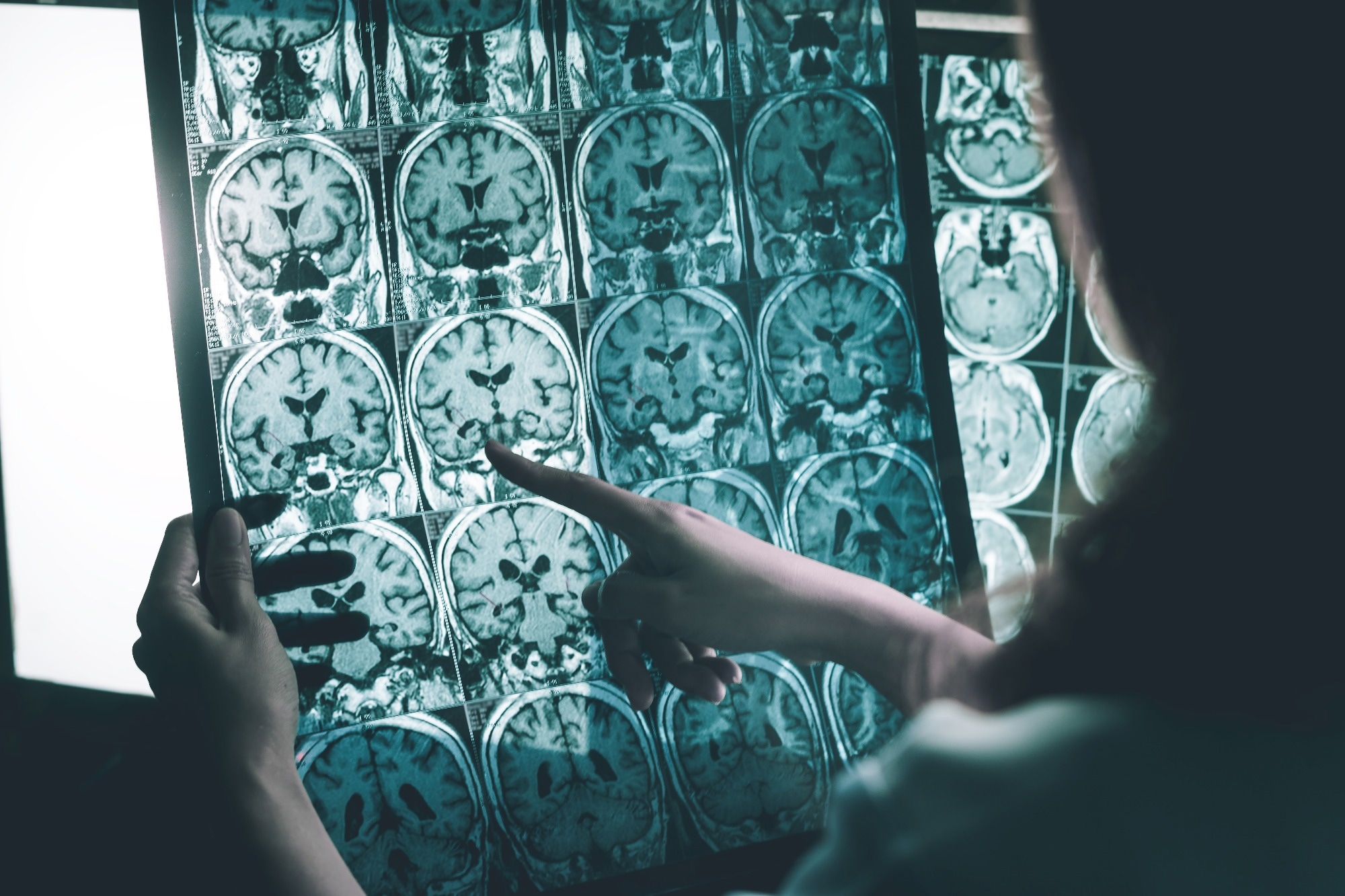In a recent study in Nature Neuroscience, researchers investigated whether the R136S genetic mutation protected against apolipoprotein E4 (APOE4)-induced late-onset Alzheimer’s disease (LOAD).
 Study: The APOE-R136S mutation protects against APOE4-driven Tau pathology, neurodegeneration and neuroinflammation. Image Credit:Atthapon Raksthaput/Shutterstock.com
Study: The APOE-R136S mutation protects against APOE4-driven Tau pathology, neurodegeneration and neuroinflammation. Image Credit:Atthapon Raksthaput/Shutterstock.com
Background
APOE4 can increase LOAD risk, leading to an earlier clinical onset and exacerbating pathologies, including amyloid-beta and tau protein accumulation, neuroinflammation, and neurodegeneration.
APOE4 carriers contribute to 55% to 75% of Alzheimer’s disease cases, underscoring the importance of investigating their roles in Alzheimer’s disease pathogenesis and identifying protective targets. The rare APOE3-R136S variant has been found to protect against early-onset AD in a PSEN1-E280A carrier.
About the study
In the present study, researchers investigated the potential of APOE-R136S mutations to protect against apolipoprotein E4-induced LOAD.
The research team conducted an experiment where they inserted R136S in the apolipoprotein E4 allele of human apolipoprotein E4 knock-in (E4-KI) mice and human-induced pluripotent stem cells (hiPSCs) obtained from an AD patient.
The team subsequently studied the effects of this document in hiPSC-derived neurons to investigate its potential for protecting against APOE4-induced tau pathology. Five isogenic hiPSC lines were karyotyped and differentiated into neurons expressing microtubule-associated protein 2 (MAP2).
The study utilized isogenic hiPSC-derived neurons, including a previously generated isogenic APOE3 hiPSC line (E3), the parental E4 hiPSC line (E4), and the isogenic homozygous (E4-S/S) and heterozygous (E4-R/S) lines.
The researchers introduced R136S into the APOE4 loci of human E4-knock in murine animals using CRISPR-Cas-9-mediated gene editing. Immunocytochemistry was used to monitor hippocampus phosphorylated tau (p-Tau) protein levels. At the same time, the effects of R136S in human neuronal cells were evaluated by quantifying APOE levels via western blotting.
Additionally, the influences of heterozygous and homozygous R136S mutations on tau uptake were assessed using human neuronal cells. Flow cytometry set differences in Tau-488 protein internalization by human neuronal cells with various APOE genotypes.
The team measured the number of Tau-488-expressing cells to investigate whether the reduced uptake of Tau through heparin sulfate proteoglycan (HSPG) contributed to the prevention of APOE4-induced accumulation of p-Tau protein. They also investigated whether R136S protected against APOE4-promoted neurodegeneration in PS19-E mice.
The researchers surveyed to measure the astrocyte coverage of the hippocampus as a percentage and normalized the astrocyte count to the size of the hippocampal region.
They also examined the level of hippocampal microgliosis in PS19 mice with different APOE genotypes using ionized calcium-binding adaptor molecule 1 (Iba1) and cluster of differentiation 68 (CD68) staining. The impact of R136S on the transcriptomic signature of the hippocampus was examined at a cellular level.
Results
Tauopathy mice were formed by expressing human APOE4 or APOE4-R136S. R136S protected against APOE4-induced p-Tau protein build-up and progressive p-Tau protein staining in the tauopathy murine model.
The homozygous R136S mutation reduced tau pathology in tauopathy mice, and only the homozygous R136S mutation protected against APOE4-induced p-Tau protein build-up in human neurons. The homozygous R136S mutation reduced HSPG-mediated Tau uptake by human neurons, probably due to defective HSPG binding of the homozygous mutation and a lack of APOE, respectively.
The presence of homozygous and heterozygous R136S mutations protected APOE4-induced astrocytosis and microgliosis, which are known to cause hippocampal neurodegeneration and atrophy in the context of tauopathy. This protection was age-dependent, with homozygous mutation being more effective than heterozygous mutation.
The homozygous R136S mutation also effectively reduces the build-up of p-Tau protein induced by APOE4 in the hippocampus. In contrast, the heterozygous mutation only partially protects against apolipoprotein E4-induced neurodegeneration and neuroinflammation but not Tau pathology.
Further, the homozygous mutation model showed a five-fold increase in APOE protein levels compared to E4 neurons, indicating that R136S may help reduce the harmful effects of apolipoprotein E4 on gamma-aminobutyric acid (GABA)-ergic neurons.
APOE expression by MAP2-positive neurons was verified by immunocytochemistry, and neuron cultures were validated negative for non-neuronal cells, including oligodendrocytes, neural stem cells, and astrocytes, based on oligodendrocyte transcription factor (Olig2), sex-determining region Y-box 2 (SOX2), and glial fibrillary acidic protein (GFAP) levels, respectively.
E3 neurons had significantly reduced p-Tau levels compared to E4 neurons. Neurons with the homozygous mutation showed 50% reductions in mean fluorescent intensity (MFI) compared to E4 neurons, indicating reduced Tau-488 protein uptake.
EKO-type neurons demonstrated remarkably reduced Tau-488 protein uptake vs. E4 neurons, indicating that R136S diminished the capability of apolipoprotein to functionally contribute to Tau-488 accumulation in neuronal cells with the homozygous mutation, resembling EKO-type neurons.
Heparin therapy significantly lowered the mean fluorescent intensity in E3, E4, and the neuronal cells with the heterozygous mutation. In contrast, heparin levels only showed declining trends in homozygous E4 mutated-neuronal cell MFI, indicating reduced HSPG-based Tau protein uptake among neuronal cells with the homozygous mutation.
Conclusions
Based on the study findings, the presence of the R136S mutation in the APOE4 gene has been found to protect mice against the build-up of tau protein and the development of tauopathy.
This mutation exhibits a dose-dependent effect, potentially being a protective factor against Alzheimer's disease.
Journal reference:
- Nelson, M.R., Liu, P., Agrawal, A., et al., (2023) The APOE-R136S mutation protects against APOE4-driven Tau pathology, neurodegeneration, and neuroinflammation, Nat Neurosci. doi: https://doi.org/10.1038/s41593-023-01480-8. https://www.nature.com/articles/s41593-023-01480-8